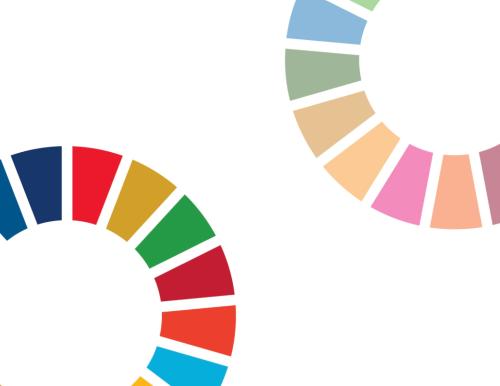Many of us working in global development are dissatisfied with the status quo. We fear that global development is not moving fast enough to address global poverty, booming youth populations, protracted crises, and other urgent development challenges. The return on investment for traditional global development projects could be higher and we need to continue to innovate. Aid budgets are under intense pressure worldwide, due to the combined effect of widespread need plus domestic politics, so it is imperative that aid become even more cost-effective and financially sustainable. Consequently, we ask ourselves: how can the global development community do better?
A new book by Ann Mei Chang, a nonresident fellow in the Global Economy and Development program, Lean Impact: How to Innovate for Radically Greater Social Good, offers a compelling answer and deserves study by anyone wrestling with the range of challenges facing global development. Chang essentially proposes to re-engineer standard approaches to development, recommending more time spent up front to truly understand the problem, small and fast iterated tests of potential solutions, rigorous efforts to measure what matters most and not fall in love with our own solutions, and a hockey-stick-shaped plan for scaling impact.
Chang’s approach is easiest to apply in two circumstances conducive to what I describe as the “pure” Lean Impact model: 1) when development professionals start from scratch with a clearly defined problem to solve or 2) when they have flexible funders at their side who will pay for the lengthier-than-usual start-up process and iterative approach required in the Lean Impact methodology in return for greater impact down the road. (Notably, Lean Impact principles are not a perfect fit for all development challenges—to give just one example, policy or regulatory changes affecting development or legal rights may be a less natural fit.)
But what about instances when the pure Lean Impact approach is appropriate but not possible?
Unfortunately, opportunities to employ the pure Lean Impact model arise less frequently than many of us would prefer. Many NGO staff members are 100 percent committed to mature, multi-year programs with existing funders and strict requirements. Workplans may have been signed off on long ago and are now difficult to change. Funding can be inflexible. Donors may lack patience for the longer start-up time, iterative approach, or open acceptance of potential failure required by Lean Impact thinking.
Never fear! I believe we can still apply Lean Impact principles—and achieve development goals more effectively—even when development professionals are working within existing and mature development projects, with more traditional donors, who in turn must often operate within existing bureaucratic, political, legal, and compliance frameworks. Adapting Lean Impact principles to these circumstances must be done carefully and with sensitivity to some very real and often quite legitimate constraints. But it is possible nonetheless.
How can Lean Impact principles be incorporated in these circumstances?
Re-examine existing projects: Even if a project team can’t re-start an existing development project from scratch, we can do a Lean Impact thought experiment to identify potential areas of innovation. Ask, what is the development problem my project is trying to solve? Then, work through the Lean Impact approach to see what you would do absent all constraints. Ask next, can any of our ideas be integrated into our existing project and workplan? Can we test some of our ideas in a small way through existing interactions with project participants? You may be surprised to find you can operate more flexibly within your existing project than you first thought.
Talk with your funders: Donors are people too and they also want to do good in the world. Talk with them about concrete ways you might adapt existing projects to run small tests to see which approaches yield the best return on investment. Remember that you are not going to them with a problem or failing by suggesting your NGO is not all-knowing about what will work best in complex environments. You are helping them to get the best return on their investment and trying to make them look good in front of their bosses. You are doing them a favor.
Develop Lean Impact talent: Most NGOs have funds and programs to professionally develop their own staff. Why can’t training on Lean Impact principles be part of that professional development agenda? And why can’t the incorporation of Lean Impact principles be a goal for performance, reviewed at regular intervals? Developing teams with a Lean Impact mindset can lead to real change while working within existing organizational frameworks.
Budget for Lean Impact: At first blush, limited budgets to experiment with new approaches are an obstacle to integrating Lean Impact principles. But maybe we can all eke out a little money from existing budgets and hopefully get even better long-term results. For instance, most NGOs have money set aside for proposal development. Why not write modest Lean Impact tests into your proposals? In addition, many NGOs also have small amounts of money set aside for innovation. What if we put aside a percentage of these funds to support very small (and potentially more frequent) Lean Impact tests? Maybe NGOs themselves would get a better return on investment of our own if we took Lean Impact’s advice and ran small tests on our innovative ideas before investing larger sums, often at a limited number of points—and sometimes once—in the fiscal year.
Measure What Matters: Most development projects now require full measurement, evaluation, and learning plans—a valuable advance in global development. A challenge, though, is that these metrics may not align with the Lean Impact objectives NGOs identify and therefore may not be measuring the indicators you need in order to test Lean Impact principles. If you cannot change the metrics themselves, the solution may be to layer on just one or two metrics that matter most even if your donor doesn’t require them. Your already overworked team may fret if you go overboard, but if they are bought on to your Lean Impact test and you truly limit the additional metrics or one or two, most teams will eagerly go along in service to more impact.
My biggest hope is that donors will change how they operate. If this happens, I have no doubt that NGOs will rapidly change their ways and we will all have more impact as a result.
In the meantime, there are ways to incorporate Lean Impact thinking into existing development work at little to no additional cost. If we truly care about impact, we in the NGO community will take them.
The Brookings Institution is committed to quality, independence, and impact.
We are supported by a diverse array of funders. In line with our values and policies, each Brookings publication represents the sole views of its author(s).



Commentary
Achieving better results in global development even when you can’t innovate radically
December 6, 2018